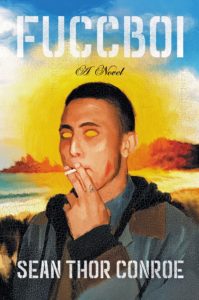Although created with good intentions, the practice of sensitivity reading has a way of tipping over into absurdity — the most recent example being Anthony Horowitz’s new book, which features a Native American character. It was dinged for two instances of ostensible offence. A description of a man as having a face that “could have been carved out of wood” was flagged for its alleged evocation of the wooden “cigar store Indians” that used to stand outside American tobacco shops in the 19th century. And a scene in which the character picked up a scalpel: the word “scalpel”, though etymologically unrelated, just looks too much like the word “scalp”.
For most people, this is obviously excessive and easily dismissed as laughable, if not mystifying (cigar store Indians are such an archaic item that most Americans have never seen one). But for those who believe strongly in editing books for sensitivity, stories like this present a conundrum: to acknowledge the inanity of this particular read would be to open the door to questions about the legitimacy of the whole practice. Hence, anyone who draws attention to something like the scalp/scalpel complaint — as I did when I stumbled across the article about it — is accused of “cherry-picking“, using outlier examples to slander an otherwise noble and useful profession.
If cherries are being picked, it is from an exceptionally well-endowed tree, to the point where it surely makes sense to ask whether there’s something about the concept of sensitivity reading — or the people attracted to it — that lends itself to this sort of excess. If these incidents are not representative of the norm, they nevertheless suggest that a highly authoritarian strain of identitarianism has penetrated publishing; even the relatively uncancellable Bret Easton Ellis came in for pre-publication criticism recently from sensitivity readers, who complained that his new novel “was not a ‘positive’ portrayal of homosexuality”.
But amid all the arguments about what sensitivity reading is, what seems far more interesting is what it apparently isn’t: there is not so much as a whiff of a pretence that this type of editing improves the literary quality of a book. One of the most common responses to those who question sensitivity reading is that they’re no different from any other subject matter expert, like the palaeontologist who reads Jurassic Park. This is an argument predicated on the somewhat crude notion that simply to be possessed of a given skin tone, genital configuration, or sexual orientation automatically conveys an unparalleled expertise in what all people of that given sex, race or orientation think, feel, and/or find offensive. The one time I served as a sensitivity reader, as a favour to a male writer who wanted his manuscript vetted for potential offences, it was not my “lived experience” as a woman that proved useful. It was my embarrassingly deep knowledge of the toxic dynamics and idiotic slap fights that periodically roil the world of young adult literature; indeed, anyone who shared a similar fascination with extremely online bullshit could have done the job.
But leaving aside the problematic nature of asking one person of a given identity to speak for all people of that identity, the idea that this is just another type of editing is belied by the way that authors themselves talk about the practice, which centres not on the quality of the story but the morality of the person telling it:
“I don’t know what I don’t know, and I don’t want to be an accidental asshole — so I’m eternally grateful for the sensitivity readers who’ve saved me from myself.”
“EVERYONE is biased, we can’t help it. We are limited to our own perspective and our own upbringings and culture and education. And so it’s so important to have those sensitivity readers. Not only did they help me not offend people (I hope), they also taught me about myself.”
“It’s not being PC; it’s being a decent human being”
It’s hard not to notice that for a sizeable contingent of authors, hiring a sensitivity reader is only nominally about accuracy, and really about ticking that “decent human being” box. The sensitivity read serves as an indulgence which, once purchased, gives you permission to tell certain kinds of stories. Whether the resulting story is entertaining or well-written is irrelevant; it’s morally good. That’s what matters.
Meanwhile, for writers who are perceived as out of step with the new orthodoxy, the conflation of getting a sensitivity read with being a decent human being can send a powerful message to capitulate and conform, or else. Nice story you’ve got there; it would be a shame if someone found it offensive. Sensitivity readers are not supposed to be censors, but in practice, the line is blurred: it is understood by authors that declining to make suggested sensitivity edits is likely to result in a book being cancelled, with all the reputational damage that entails — this, according to Anthony Horowitz, was his primary reason for not fighting the inanity of the scalp/scalpel conflation — and sensitivity readers are not above using their influence to kill a project before it’s got off the ground.
That said, this is not an argument for getting rid of sensitivity readers. Sensitivity reads are less a moral signifier than a matter of craft, one some writers will find useful, and some will not. To write fiction is to write imaginatively outside the bounds of one’s own experience, and any tool that allows someone to do this with confidence — including employing a sensitivity reader — is certainly fair game. In my own books, when writing about experiences that are truly foreign to me, I tend to collect research from multiple people and perspectives, establishing a baseline pool of knowledge and then letting imagination take over from there. But I also care less that the result is authentic than that it is engaging.
Meanwhile, a cultish conviction has developed within the writing community of late: that the most important thing a novel can be is “authentic”. And yet, some of the best works of fiction are anything but: the satire of Gary Shteyngart, the lowkey horror of Shirley Jackson, the magical realism of Gabriel García Márquez, the time-travelling raptures of Diana Gabaldon. These books aren’t authentic, but something far better: fantastical, or imaginative, or absurd, or terrifying, and to alter them in the name of authenticity would be to drain them of their spark. What makes a story compelling is not its adherence to reality; it’s whether it feels true, in the moment, on the page.
If anything, this is what troubles me about the push to normalise sensitivity reading: that it seems to signal a narrowing of the literary landscape, a massive cultural shift in what we understand the purpose of art to be. The new paradigm is one in which we worry less about communicating an idea than about the specific words we use. Consider the recent, viral chart suggesting more sensitive alternatives to “violent” language in the workplace, the apparent intention being to make people communicate with their colleagues in the colourless, ultra-literal style that we use to make ourselves understood by Siri. Despite their alleged purpose, these guides do not actually foment better communication; they hamstring it, imbuing every exchange with the subtextual fear of how an uncharitable person might misinterpret what is being said.
If this is a bad way to be in the office, it is a worse way to write a book — or to read one, for that matter. But of course, most people don’t read this way. One of the most peculiar things about sensitivity readers is how very far their concerns are from those of actual readers, who tend to be far too interested in what’s happening on the page to wallow in the offensive implications of this or that individual word choice. Three years ago, the New York Times review of the novel American Dirt made much of the book’s “strange, excited fascination in commenting on gradients of brown skin” — the type of thing a sensitivity reader would surely flag as potentially problematic. But when I read the book myself, even despite having been primed to notice said “fascination”, the mentions of skin tone were such a seamless part of the story that they didn’t even register. One imagines that the millions of readers who made the book a massive bestseller were similarly unperturbed.
The question, then, is: who is actually served by this type of editing? The rare reader who would actually take offence at the use of the word “scalpel” in Horowitz’s book is entitled to his feelings, but he can always read another book (or better yet, write a scathing review complaining about this one’s rampant bigotry). The implication of sensitivity reading, though, is that every book should be written with this person in mind, that his sensibilities should form some sort of literary standard. I’ve tried to imagine how this might play out in other creative fields — what would happen if, for instance, the restaurant industry employed sensitivity tasters to flag any dish that contained too much spice? Certainly, the chefs would baulk at this: why should the sensibilities of those who can’t tolerate spicy food supersede those of the people who consume ghost peppers recreationally? What greater good can possibly be served in making sure every dish is tailored to the tastes of the most sensitive, when there are so many ingredients, and the table is so very big?
Of course, some creators want to centre sensitivity in their work, and they should — because diversity, real diversity, is about there being something for everyone, including those who read books in gleeful anticipation of finding something to get mad about. But surely there should also be room for readers, and writers, who simply don’t share those sensibilities. Writers who value an engaging story over an authentic one, writers who are confident and unapologetic in their ability to imagine the interior lives of their characters. Writers who don’t want to treat their readers with sensitivity — because they would rather tear your heart out, make you swoon or rage or cry, and leave you breathless.
Disclaimer
Some of the posts we share are controversial and we do not necessarily agree with them in the whole extend. Sometimes we agree with the content or part of it but we do not agree with the narration or language. Nevertheless we find them somehow interesting, valuable and/or informative or we share them, because we strongly believe in freedom of speech, free press and journalism. We strongly encourage you to have a critical approach to all the content, do your own research and analysis to build your own opinion.
We would be glad to have your feedback.
Source: UnHerd Read the original article here: https://unherd.com/




